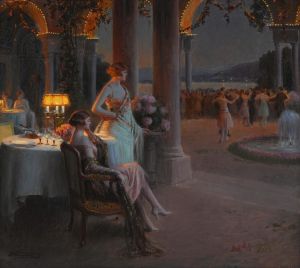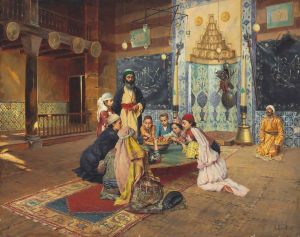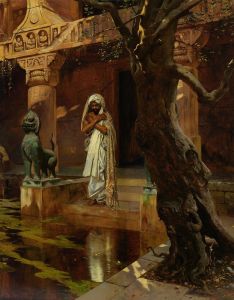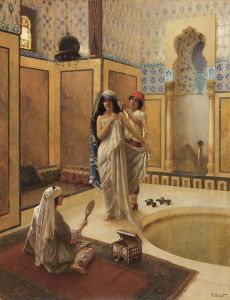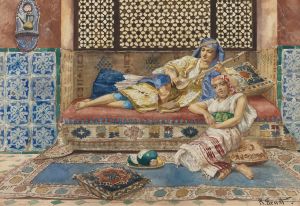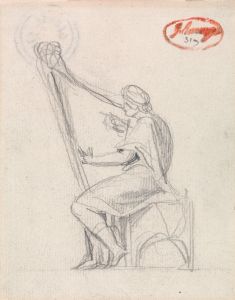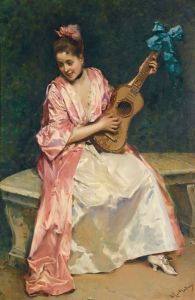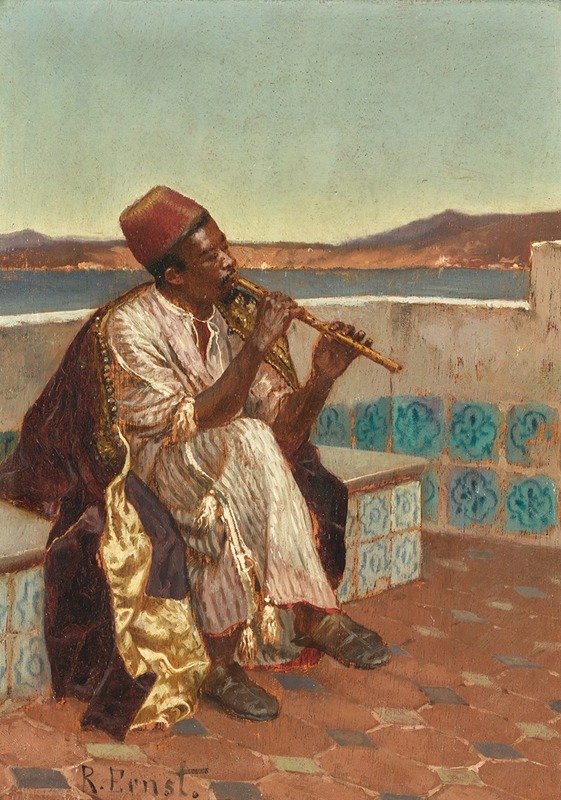
Musician On The Terrace
A hand-painted replica of Rudolf Ernst’s masterpiece Musician On The Terrace, meticulously crafted by professional artists to capture the true essence of the original. Each piece is created with museum-quality canvas and rare mineral pigments, carefully painted by experienced artists with delicate brushstrokes and rich, layered colors to perfectly recreate the texture of the original artwork. Unlike machine-printed reproductions, this hand-painted version brings the painting to life, infused with the artist’s emotions and skill in every stroke. Whether for personal collection or home decoration, it instantly elevates the artistic atmosphere of any space.
Rudolf Ernst was an Austrian painter known for his Orientalist works, which often depicted scenes inspired by the cultures and landscapes of the Middle East and North Africa. One of his notable paintings is "Musician On The Terrace." This artwork exemplifies Ernst's fascination with the exotic and his meticulous attention to detail, which are hallmarks of his style.
"Musician On The Terrace" captures a serene and intimate moment, featuring a musician playing an instrument on a beautifully adorned terrace. The painting is characterized by its vibrant colors and intricate patterns, which are typical of Ernst's work. The setting is richly decorated, with elaborate textiles and architectural elements that reflect the artist's interest in the decorative arts of the regions he portrayed.
Ernst's Orientalist paintings were part of a broader 19th-century European art movement that romanticized and idealized the cultures of the East. This movement was fueled by increased travel and exploration, as well as a fascination with the perceived exoticism of Eastern societies. Artists like Ernst sought to capture the allure and mystery of these distant lands, often through a Western lens that emphasized opulence and sensuality.
In "Musician On The Terrace," Ernst's skillful use of color and light creates a warm and inviting atmosphere. The musician, dressed in traditional attire, is depicted with a sense of calm and focus, absorbed in the act of playing music. The terrace setting, with its lush greenery and ornate furnishings, adds to the painting's sense of tranquility and elegance.
Ernst's attention to detail is evident in the intricate patterns of the textiles and the careful rendering of the architectural features. These elements not only showcase his technical prowess but also reflect his deep appreciation for the artistic traditions of the cultures he depicted. His work often included a blend of real and imagined elements, creating a sense of timelessness and fantasy.
While Ernst's paintings are celebrated for their beauty and craftsmanship, it is important to recognize the context in which they were created. Orientalism, as an art movement, has been critiqued for its tendency to exoticize and stereotype non-Western cultures. Ernst's work, like that of many Orientalist artists, reflects the attitudes and assumptions of his time, which can be seen as both a celebration of cultural diversity and a product of colonialist perspectives.
"Musician On The Terrace" remains a testament to Rudolf Ernst's artistic talent and his ability to evoke a sense of wonder and admiration for the cultures he portrayed. The painting continues to be appreciated for its aesthetic qualities and serves as a reminder of the complex interplay between art, culture, and history.






